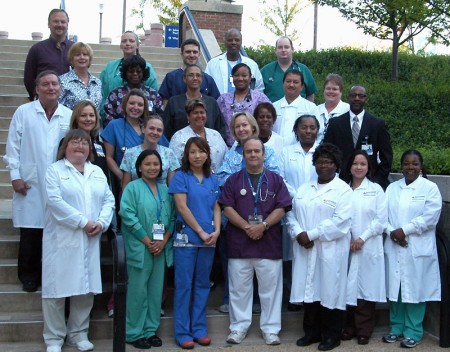In November of 2007, the Clinical Laboratory at Johns Hopkins Bayview Medical Center assumed responsibility from JHU Pulmonary for both procurement and analysis of arterial blood gases (ABG). To accomplish this responsibility, there were hurdles to overcome. Procurement was the first major hurdle since no one in the Lab was proficient at arterial blood collection. The Community College of Baltimore County (CCBC) was contracted to perform the necessary education and training. Procurement proficiency was obtained by performing collections under the supervision of the Pulmonary staff. It took approximately three months for the Clinical Laboratory staff to become highly proficient at procurement.
Turnaround time (TAT) from procurement to reported results was the next major hurdle. This was more difficult because it involved factors outside of the Laboratory. Originally, an ABG order was communicated via pager. The Unit would page the ABG beeper, and the Clinical Laboratory staff would then call the number to obtain the location of the patient. By switching to a SpectraLink telephone, the Unit could speak directly to the ABG tech, thus eliminating the page and callback delay.
From that point forward, the Clinical Laboratory staff was instrumental in strategizing and implementing practices to reduce TAT. Each month, the average ABG TAT was reported. The staff would discuss problems and offer suggestions on how the TAT could be improved. One example of a problem was missing patient FIO2 level information. This information was needed to produce an accurate ABG result. Delays occurred when Clinical Laboratory staff had to call the unit to obtain the information. In response, special labels requesting FIO2 levels were designed to go on the outside of the transport bags. These labels facilitated obtaining the necessary information at the time of collection. Other suggestions included improved specimen labels, modifying the ordering process and developing different ordering processes for the ICUs and OR. Poor Unit practices also contributed to the delay. These practices were addressed with the Units. One by one, each complication that caused delay was addressed. The result was a consistent average TAT of 11 minutes. This past March, the Clinical Laboratory staff broke the 11-minute average by one minute!
A literature search was conducted to determine a “benchmark” for ABG TAT. The 11-minute TAT outperformed national central laboratories, as well as ICU satellite laboratories. Our average TAT is equal to bedside analyzers and slightly above portable Point- of-Care (POC) analyzers.
Kudos to the Clinical Laboratory staff for their teamwork and dedication to patient care! Faster results allow for more rapid medical intervention. The next hurdle will be to maintain the excellent performance.
Judy Jones, BA, H(ASCP)
Supervisor Technical/Operations Core Lab/Central Reporting
Department of Pathology
Johns Hopkins Bayview Medical Center
Suzy Nicol, M.S., MT(ASCP)SBB
Assistant Administrator
Department of Pathology
Johns Hopkins Bayview Medical Center
